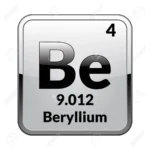
Zinc supplements on their periodic table square.
Zinc (Zn) has thirty protons in its nucleus and has an atomic number of thirty. It is a metal, but it is an essential nutrient in both plants and animals.
Zinc is the twenty-fourth most abundant element in the Earth’s crust.
It accounts for approximately 75 parts per million, or.0075%, of the Earth’s crust.
Zinc is also found in seawater at approximately thirty parts per billion.
Zinc is commonly found in combination with other elements such as copper.
It has five stable isotopes that occur naturally.
Zn-64 is the most common stable isotope of zinc.
Zn-64 has such a long half-life that it has almost no radioactive properties.
Workmen and artisans have been using it since at least 1000 BC.
One prehistoric statue made of more than 87% zinc was discovered in modern-day Romania.
Writings dating back to 400 BC mention a silvery metal used to make brass, most likely zinc.
Paracelsus most likely gave zinc its name.
Andreas Sigismund Marggraf is widely credited with discovering zinc’s pure metallic form in 1746.
Many scientists were said to have worked on zinc and zinc oxide experiments as early as the late 1600s.
Zinc is used to make brass, which is alloyed with copper, and many other alloys.
Because of its non-corrosive properties, it is also used in plating iron.
Zinc is a hard metal that becomes very malleable at temperatures above 100 degrees Celsius.
After cadmium and mercury, it has the lowest melting point of all transition metals.
Zinc is a fairly strong reducing agent, and it tarnishes very quickly.
Zinc produces a bright blue-green flare.
Zinc compounds are in short supply.
Zinc is the fourth most commonly used metal in industry, following copper, aluminum, and iron.
Today, nearly 70% of zinc is mined and 30% is recycled.
Almost all of the zinc mined (95%) comes from sulfide ore deposits.









